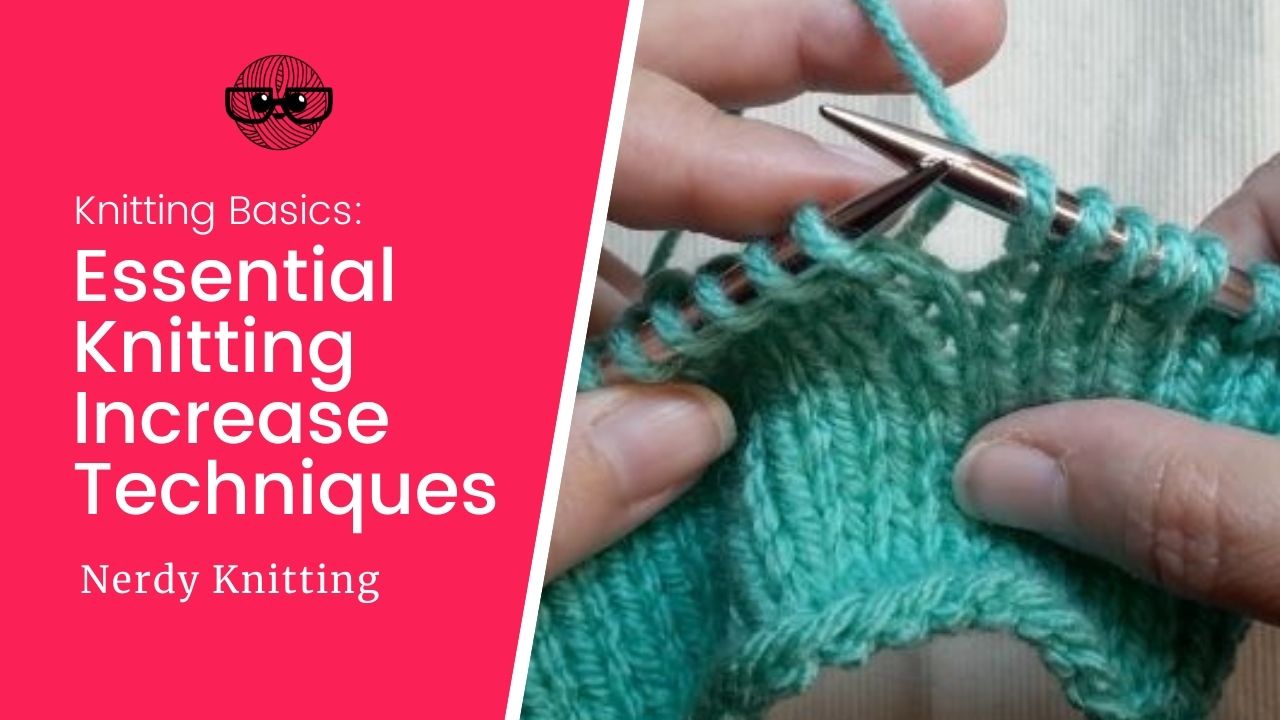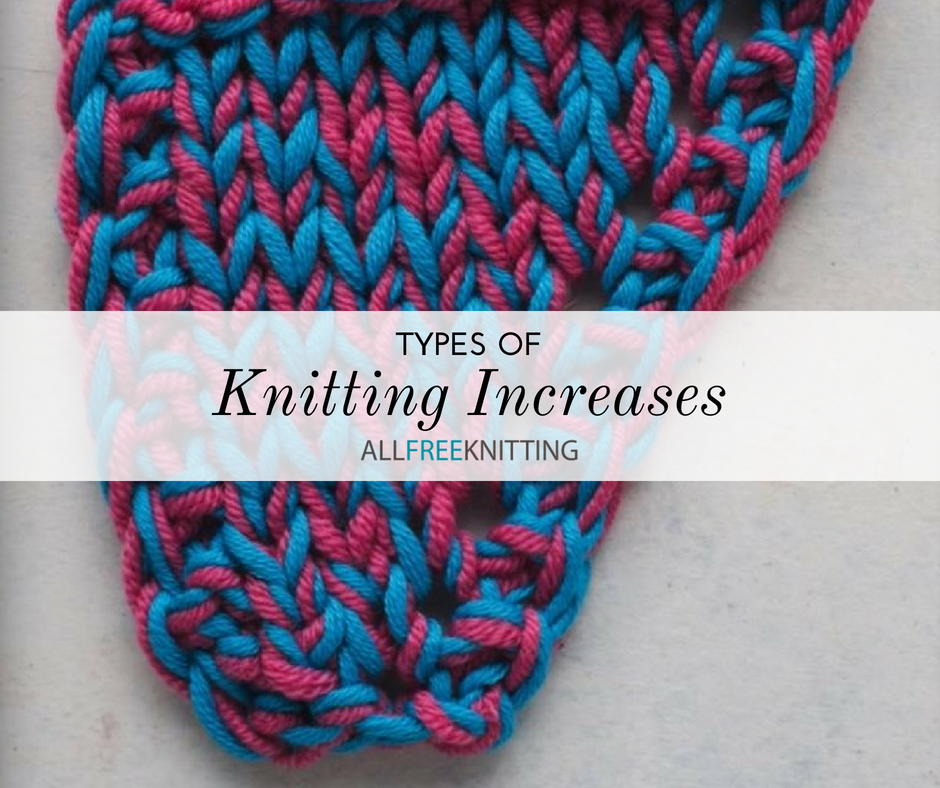Increases In Knitting
Increases In Knitting - Typically, make one left (m1l) and make one right (m1r) is where you start. Web to increase stitches in knitting, it’s important to understand stitch gauge and tension, as well as the various methods available such as yarnover increases, knit front back increases, make one increases, lifted increases, and slip slip knit increases. Web what is an increase? Knit one stitch as normal as a preparation ( note: In knitting an increase is a stitch that adds one (or more) stitches to your row/round. Web how to increase stitches in knitting: Perhaps the simplest way to add stitches to your knitting is by working a yarnover. One of the easiest and most common increases is to knit into the front and back of a stitch (kfb). Then, if we continue increasing or decreasing, we will eventually come back to the pattern. Knitted sweaters and shawls, in particular, use increases for shaping purposes. Web looking for a knitted increase that’s nearly invisible? Knit one stitch as normal as a preparation ( note: Increases allow you to expand the total number of stitches in a row or round. I am using the knitter's pride dreamz here. By adding stitches you can make a piece of knitting wider or create a curved edge. I am using the knitter's pride dreamz here. 1.1m views 9 years ago #makealong #woolandthegang. 1.3m views 14 years ago discover how to knit. This stitch is technically speaking not part of the left lifted increase. However, you may see instructions. Once a knitter finished their first garter stitch scarf or potholder, they will soon be confronted with knitting increases. This stitch is technically speaking not part of the left lifted increase. Then, if we continue increasing or decreasing, we will eventually come back to the pattern. But no two increases are exactly alike. I am using the knitter's pride dreamz. Web the primary purpose of increases in knitting is to shape the fabric by adding new stitches. Web to increase stitches in knitting, it’s important to understand stitch gauge and tension, as well as the various methods available such as yarnover increases, knit front back increases, make one increases, lifted increases, and slip slip knit increases. Use the calculator below. Use the calculator below to determine how to increase evenly across your row or round of knitting. Web to increase stitches in knitting, it’s important to understand stitch gauge and tension, as well as the various methods available such as yarnover increases, knit front back increases, make one increases, lifted increases, and slip slip knit increases. Rib, seed, basketweave, moss),. 1.3m views 14 years ago discover how to knit. K3, (m1, k5) 9 times, m1, k2. By adding stitches you can make a piece of knitting wider or create a curved edge. Increases allow you to expand the total number of stitches in a row or round. Then, if we continue increasing or decreasing, we will eventually come back to. All of them have a particular lean. This is useful for shaping fitted knit items, such as sweaters, hats, and mittens. Increases allow you to expand the total number of stitches in a row or round. Web there are several ways to increase, and each method adds extra stitches to the row unless they are paired with compensating decreases. Number. I am using the knitter's pride dreamz here. This video shows you an increase. Increasing is used whenever a knitted piece needs to be wider, such as sleeve shaping. In knitting an increase is a stitch that adds one (or more) stitches to your row/round. This photo and video tutorial will show you how. In knitting an increase is a stitch that adds one (or more) stitches to your row/round. Once a knitter finished their first garter stitch scarf or potholder, they will soon be confronted with knitting increases. Some are single increases, some are double. Have you ever been shaping a project with increases, and wished the increases could blend into the fabric. Web looking for a knitted increase that’s nearly invisible? This is useful for shaping fitted knit items, such as sweaters, hats, and mittens. This video shows you an increase. Well, then you came to. This stitch is technically speaking not part of the left lifted increase. Knowing some increases and decreases will allow you branch out into making garments that fit. The yarnover increase is worked by wrapping the yarn over the right needle between two stitches. Number of stitches to increase: This stitch is technically speaking not part of the left lifted increase. So if your pattern says lli, it means you have to perform the steps starting from #2 after a knit stitch) Increasing is used whenever a knitted piece needs to be wider, such as sleeve shaping. Type in stitch counts and click. Web there are several ways to increase, and each method adds extra stitches to the row unless they are paired with compensating decreases. Web looking for a knitted increase that’s nearly invisible? Find out how to work four different increases to add stitches to your knitting. Try the left and right lifted increases! Typically, make one left (m1l) and make one right (m1r) is where you start. Make one (m1) bar increase. In knitting an increase is a stitch that adds one (or more) stitches to your row/round. Bar increases (also called knit front back) make one increases. Learn three types of knitting increases:
RLI Right Lifted Increase in Knitting YouTube

How to Increase in Knitting (Essential Increases for Every Knitter

Knitting increases The ultimate list every knitter should know

LLI Left Lifted Increase in Knitting YouTube

How To Increase Stitches In Knitting Knitting increase, Beginner
![How to do the Central Double Increase in knitting [+video]](https://nimble-needles.com/wp-content/uploads/2020/07/central-double-increase.jpg)
How to do the Central Double Increase in knitting [+video]

How To Knit Lifted Increases knotions

6 Types of Knitting Increases
![How to do the Central Double Increase in knitting [+video]](https://nimble-needles.com/wp-content/uploads/2020/07/central-double-increase-altenative-with-no-holes-swatch-1024x684.jpg)
How to do the Central Double Increase in knitting [+video]

How To Increase In Knitting Made Easy for Beginners TREASURIE
Web 1 Basic Methods Of Increasing Stitches In Knitting.
1.3M Views 14 Years Ago Discover How To Knit.
K3, (M1, K5) 9 Times, M1, K2.
Web The Primary Purpose Of Increases In Knitting Is To Shape The Fabric By Adding New Stitches.
Related Post: